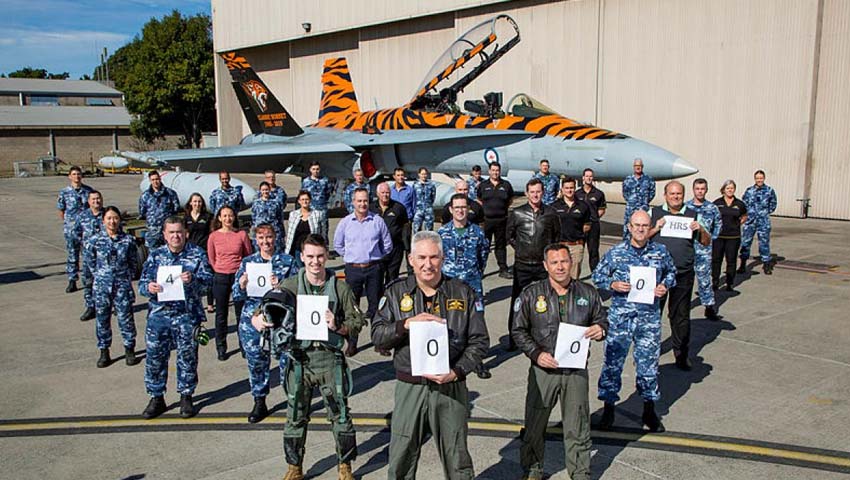The F-18A/B Hornet has recently reached a milestone of 400,000 flying hours since entering service with the Royal Australian Air Force over three decades ago.
Commanding Officer of No. 2 Operational Conversion Unit, Wing Commander Scott Woodland, said it was a team effort spanning generations.
“Air Force owes much of this success to the technicians, engineering and logistics officers, Warrant Officer Engineers and senior engineers that have supported Hornet operations for more than 30 years. There is no doubt that it was the dedication and commitment of individuals that contributed to this milestone,” WGCDR Woodland said.
“As Commanding Officer of No. 2 Operational Conversion Unit, it is an honour and a privilege to be part of that history.”
With the phased draw-down of the F/A-18A/B Hornet fleet in progress, the strength and effectiveness of one of Air Force’s fourth-generation air combat capabilities can also be attributed to the close relationships developed with related Defence organisations and industry partners.
Officer Commanding of No. 81 Wing, Group Captain Benjamin Sleeman, said these relationships were highly valued.
“In addition to the outstanding contributions of our No. 81 Wing personnel, the unwavering support from the Tactical Fighter System Program Office (TFSPO), the Capability, Acquisition and Sustainment Group, as well as Hornet enterprise partners, has ensured the aircraft has retained its strength of position as a significant air asset within the Royal Australian Air Force fleet,” GPCAPT Sleeman said.
“Of paramount importance is that these partnerships have also ensured that the aircraft has been flying safely in the air by our aircrew over those 400,000 flying hours – an achievement to be celebrated and acknowledged.”
F/A-18A/B Hornets are planned to be withdrawn from service in December 2021, with the fleet to be replaced by the F-35A Lightning II.






